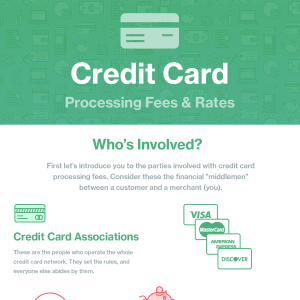Internet payment processors come in two different varieties: full merchant account providers like the kind described above and third-party processors (also called aggregators or payment service providers) like PayPal, Stripe, and Square. Our Square review showcases a payment service provider with much to offer a budding online merchant.
Both merchant account providers and third-party processors can make for great online payment processors, and both are well-represented among the best credit card processors overall. However, it’s still important to know the differences between the two, as these differences will determine which option is the best fit for your business.
Setting up an account with a third-party processor is simpler and quicker than setting up a full merchant account. That’s because third-party processors aggregate all their merchants into one huge merchant account instead of giving each merchant their own account.
Merchant accounts offered by direct processors provide a higher level of account stability due to the extensive underwriting and risk assessment you undergo to get your merchant account.
With third-party processors, you undergo very little underwriting beforehand. Therefore, the processor scrutinizes your individual transactions much more intensely, making it more likely that you’ll experience an account hold or termination. Our tips can help you minimize the risk of experiencing this, though.
The flip side of this is the cost advantage of third-party processors for new businesses. These processors typically offer flat-rate pricing and pay-as-you-go agreements. There are few (if any) monthly or annual fees to pay, and you don’t need to meet a monthly minimum in card transactions, making it easy to start taking card payments with no business history.
With your own merchant account, you’ll usually pay monthly and potentially annual fees, you’ll need to process at least $5K-$10K per month in card transactions, and the pricing is not normally flat-rate (though it may be). Your rates may vary depending on your business model and industry.
Some merchant accounts (particularly high-risk specialists) require you to sign a multi-year contract. Still, above that $10,000/month mark, merchant accounts do offer cost savings, and as your sales volume increases, you’ll qualify for even more discounts.












